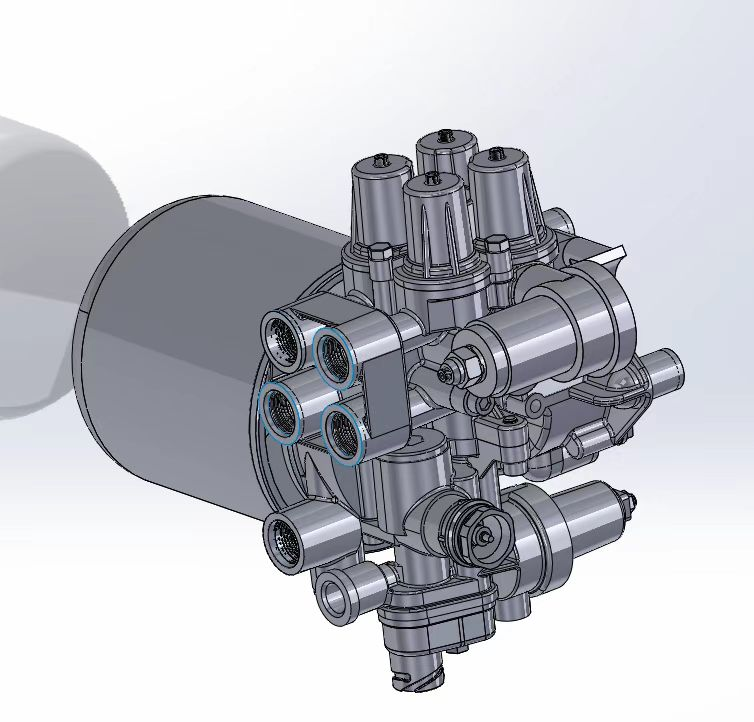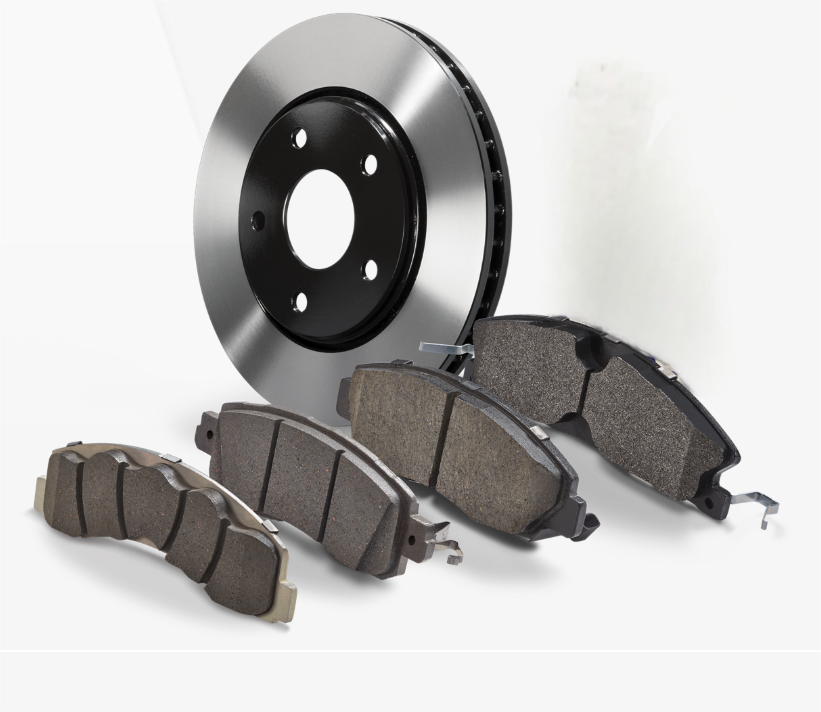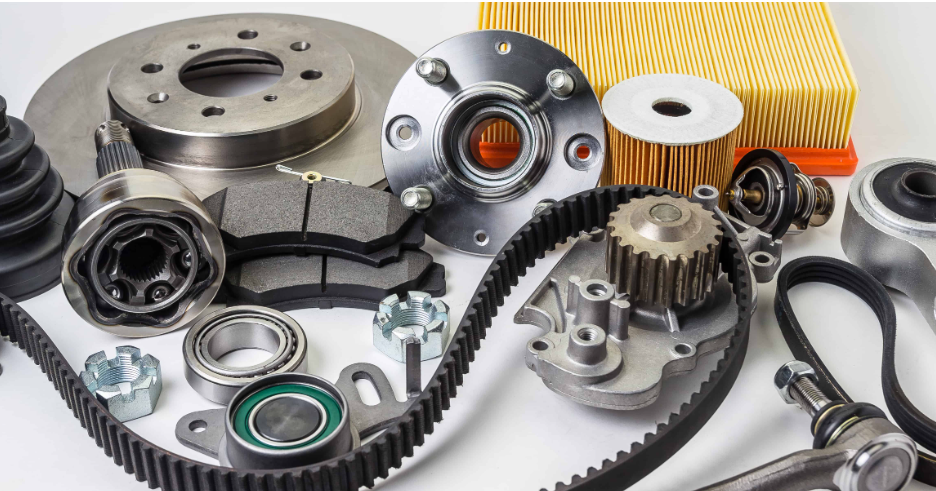บทบาทสำคัญของท่อยางแอร์รถยนต์ในประสิทธิภาพของยานพาหนะ
วิธีที่ท่อยางแอร์ส่งผลต่อประสิทธิภาพการระบายความร้อน
ខ្សែ AC មានតួនាទីសំខាន់ក្នុងការដឹកជញ្ជូនវត្ថុធាតុបញ្ចូលនៅក្នុងប្រព័ន្ធសំយោគបរិយាកាស ដែលជាកត្តាមួយចាំបាច់ដើម្បីរក្សាសីតុណ្ហភាពខាងក្នុងយានជំនិះអោយមានសភាពស្រួល។ នៅពេលដែលខ្សែទាំងនេះនៅតែមានសុវត្ថិភាព និងមិនខូចខាត វានឹងជួយបង្កើនប្រសិទ្ធភាពការត្រជាក់។ ប៉ុន្តែប្រសិនបើមានការខូចខាតតិចតួចណាមួយ វត្ថុធាតុបញ្ចូលនឹងហូរចេញក្រៅ។ ហើយនៅពេលនោះបញ្ហាពីរយ៉ាងនឹងកើតឡើងគឺ ការត្រជាក់មិនបានល្អដូចដែលគ្រោងទុក និងចំណាយលុយច្រើនដល់ការបំពេញវត្ថុធាតុបញ្ចូលថ្មី។ ការសិក្សាមួយបានបង្ហាញថា ខ្សែ AC ដែលស្ថិតក្នុងស្ថានភាពល្អ ក៏ជួយបង្កើនប្រសិទ្ធភាពនៃការប្រើប្រាស់ឥន្ធនៈផងដែរ ពីព្រោះម៉ូទ័រមិនចាំបាច់ប្រឹងប្រែងខ្លាំងដើម្បីរក្សាសីតុណ្ហភាពខាងក្នុងអោយត្រជាក់នោះទេ។ ដូច្នេះការថែរក្សាខ្សែឱ្យស្ថិតក្នុងស្ថានភាពល្អគឺមានសារសំខាន់សម្រាប់ភាពស្រួលរបស់អ្នកបើកបរ និងប្រសិទ្ធភាពរបស់យានជំនិះ។
สัญญาณที่บอกว่าท่อยางแอร์ของคุณต้องการเปลี่ยน
ការដឹងថាពេលណាដែលខ្សែបូរសំយោគត្រូវការជំនួសនឹងជួយបានប្រាក់កាត់បន្ថយការជួសជុលធំជាងនេះក្រោយមក។ ត្រូវពិនិត្យខ្សែបូរទាំងនោះឱ្យបានទៀងទាត់សម្រាប់រាល់ការខូចខាតដែលបង្ហាញដូចជាស្នាមបាំងដែលកាត់តាមវា ឬកន្លែងណាដែលអាចមានការហូរចេញនៃវត្ថុត្រជាក់។ ប្រសិនបើរថយន្តមិនត្រជាក់បានត្រឹមត្រូវទៀតហើយឬបង្កើតសំឡេងគួងឮងពេលដែលប្រព័ន្ធអ៊ីសូត្រជាក់ចាប់ផ្ដើមដំណើរការ នោះប្រហែលជាមានអ្វីមួយខុសពីដំណើរការរបស់ខ្សែបូរទាំងនោះ។ ភាគច្រើនមេកានិចណែនាំឱ្យពិនិត្យមើលខ្សែបូរនៅពេលមកធ្វើការជួសជុលឬថែទាំធម្មតាបណ្ដាលអោយអាចចាប់យកបញ្ហាតូចតាចបាននៅពេលនេះ ដើម្បីជៀសវាងការជួសជុលដែលមានតម្លៃថ្លៃនៅពេលក្រោយ។ ខ្សែបូរចាស់ៗនឹងបណ្ដាលអោយប្រព័ន្ធអ៊ីសូត្រជាក់ខូចទាំងស្រុងនៅទីបញ្ចប់ ដែលធ្វើឱ្យអ្នកបើករថយន្តមានអារម្មណ៍ក្ដៅក្រហាយនៅរដូវក្ដៅ។ ដូច្នេះហើយបានជាអ្នកមានរថយន្តដែលឆ្លាតវៃតែងតែកំណត់ពេលវេលាសម្រាប់ធ្វើការពិនិត្យមើលឱ្យបានទៀងទាត់ និងជំនួសខ្សែបូរចាស់ៗមុនពេលដែលវាខូចទាំងស្រុង។
កត្តារូបិយប័ណ្ណសម្រាប់ការជំនួសទួយ AC Auto ដែលជោគជ័យ
ភាពរីកចំរើននិងភាពតahan
ការជំនួសខ្សែបូមខ័រត្រជាក់រថយន្ត មានន័យថាការជ្រើសរើសយកវត្ថុធាតុដើមឱ្យបានត្រឹមត្រូវ ប្រសិនបើអ្នកចង់ឱ្យវាប្រើបានយូរ។ នៅពេលខ្ញុំធ្វើដំណើរការនេះ ខ្ញុំតែងតែប្រើខ្សែបូមដែលផលិតពីវត្ថុធាតុដែលមានគុណភាព ដែលអាចទប់ទល់នឹងសីតុណ្ហភាពក្តៅខ្លាំងៗ និងសារធាតុគីមីផ្សេងៗដែលអាចមាននៅក្នុងប្រព័ន្ធ។ តាមការពិត វត្ថុធាតុធម្មតាមិនអាចឱ្យបានលទ្ធផលល្អនោះទេ នៅពេលប្រឈមមុខនឹងសំណើម ឬពន្លឺព្រះអាទិត្យរយៈពេលវែងបែបនេះ។ វានឹងចាប់ផ្តើមខូចទ្រង់ទ្រាយនៅទីបំផុត ដែលធ្វើឱ្យយើងត្រូវជំនួសវាមុនពេលដែលយើងចង់។ ការសាងសង់បែបបង្កាំងក៏សំខាន់ណាស់ដែរ ពីព្រោះបើគ្មានវា ខ្សែបូមទាំងនោះនឹងផ្ទះពេលសម្ពាធកើនឡើង ហើយគ្មាននរណាម្នាក់ចង់ឱ្យកើតមានភាពយន្តបែបនេះនៅក្នុងប្រព័ន្ធត្រជាក់រថយន្តរបស់ពួកគេទេ។ ការជ្រើសរើសយកខ្សែបូមដែលរឹងមាំពិតជាផ្តល់ប្រយោជន៍នៅពេលវែង។ មិនត្រឹមតែវាប្រើបានយូរនោះទេ ប៉ុន្តែប្រព័ន្ធត្រជាក់ទាំងមូលក៏ដំណើរការបានល្អជាប់លាប់ ដោយគ្មានការខូចខាតរំខាន់នៅរដូវក្តៅនោះទេ។
សមត្ថភាពសម្រាប់លំដាប់ឡានរបស់អ្នក
ការទទួលបានផ្នែកខ្សែបូរសើង (AC hoses) ត្រឹមត្រូវ ដើម្បីផ្គូផ្គងជាមួយម៉ូដែលរថយន្តជាក់លាក់មួយ គឺពិតជាមានសារសំខាន់ណាស់ សម្រាប់អ្នកដែលកំពុងធ្វើការលើប្រព័ន្ធរថយន្ត។ នៅពេលស្វែងរកផ្នែកជំនួស ការពិនិត្យមើលឱ្យបានត្រឹមត្រូវ អំពីម៉ាក និងម៉ូដែលរបស់រថយន្ត នឹងជួយការពារបញ្ហានានាដែលប្រឈមនៅពេលក្រោយ។ ផ្នែកខ្សែបូរសើងខុសប្រភេទ តែងតែនាំឱ្យមានបញ្ហានានាក្រោយពេលដំឡើងរួច ដូចជាការហូរចេញ (leaks) ដែលកាន់តែធ្ងន់ធ្ងរឡើងតាមពេលវេលា និងករណីខ្លះ ប្រព័ន្ធទាំងមូលអាចខូចខាតទាំងស្រុង។ ដូច្នេះហើយ អ្នកជួសជុលរថយន្ត តែងតែប្រើសៀវភៅណែនាំកែសម្រួល (repair manuals) ឬទាក់ទងអ្នកជួសជុលដែលមានបទពិសោធន៍ នៅពេលពួកគេកំពុងស្វែងរកផ្នែកត្រឹមត្រូវសម្រាប់រថយន្តខុសៗគ្នា។ ការធ្វើជំហានបន្ថែមទាំងនេះ នឹងជួយសន្សំសំចៃថវិការបស់អ្នក នៅពេលខាងមុខ ដោយការកាត់បន្ថយការខូចខាតផ្នែក និងរក្សាប្រព័ន្ធកម្តៅឱ្យដំណើរការបានរលូនដោយគ្មានការរំខានដោយមិនបានរំពឹងទុក។
ស្តង់ដារអេណែនិងសuh
ការស្គាល់ពីសំពាធនិងសីតុណ្ហភាពមានសារសំខាន់ណាស់សម្រាប់រក្សាទុកនូវខ្សែបូមខ្យល់អោយដំណើរការបានល្អ។ នៅពេលពិចារណាជម្រើសនៃខ្សែបូម វាសំខាន់ណាស់ក្នុងការពិនិត្យមើលសំពាធរបស់វាដើម្បីប្រាកដថាវាអាចទប់ទល់នឹងស្ថានភាពផ្សេងៗដែលកើតឡើងដោយមិនបំបែកខ្សែបូម។ ប្រសិនបើខ្សែបូមមិនបំពេញតាមតម្រូវការទេ បញ្ហានឹងកើតឡើងយ៉ាងឆាប់រហ័ស ពេលខ្លះគ្រាន់តែជាបញ្ហាប្រតិបត្តិការតូចតាចប៉ុន្តែពេលខ្លះវាអាចបង្កជាបញ្ហាធំដែលត្រូវចំណាយប្រាក់ច្រើនដើម្បីជួសជុល។ ការពិនិត្យមើលលេខទាំងនេះឱ្យបានទៀងទាត់នឹងអាចការពារបញ្ហាបានដូចជាការឡើងកម្ដៅ រក្សាប្រព័ន្ធអ៊ីវ៉ាន់ (HVAC) អោយដំណើរការបានរលូន និងធានាថាអ្នកនៅខាងក្នុងមានសុភមង្គលទោះបីជាសីតុណ្ហភាពខាងក្រៅមានការផ្លាស់ប្ដូរយ៉ាងណាក៏ដោយ។
ដោយផ្ដោតលើកត្តាសំខាន់ទាំងនេះ គឺជាតិសម្ភារៈដែលធន់បានយូរ ភាពឆបគ្នានឹងយានយន្ត និងសំពាធដែលបានបញ្ជាក់យ៉ាងច្បាស់ ខ្ញុំធានាថាការជំនួសបានជោគជ័យ និងការដំណើរការរបស់យានយន្តបានយូរ។ វិធីសាស្រ្តដ៏រាងចិត្តនេះមិនត្រឹមតែធ្វើអោយប្រព័ន្ធអ៊ីវ៉ាន់ (HVAC) មានប្រសិទ្ធភាពបានល្អប៉ុណ្ណោះទេ ប៉ុន្តែថែមទាំងការការពារហានិភ័យនៃការខូចប្រព័ន្ធផងដែរ។
Galaxy 4826: បង្កើតឡើងដើម្បីសម្រាប់សមត្ថភាព AC ល្អបំផុត
ទិន្នន័យសម្រាប់សាងសង់ល្អបំផុត
ដោយត្រូវបានសាងសង់ឱ្យរឹងមាំ Galaxy 4826 ប្រើប្រាស់វត្ថុធាតុដែលមានគុណភាពខ្ពស់ ដែលធ្វើឱ្យខុសគ្នាពីអាយុកាលរបស់វា។ ខ្សែបូរបានសាងសង់ដោយប្រើប្រាស់គ្រឿងផ្សំដែលមានគុណភាពខ្ពស់ ដែលអាចទប់ទល់នឹងការខូចខាតដែលកើតឡើងជាញឹកញាប់ចំពោះខ្សែបូរម៉ាស៊ីនត្រជាក់។ វាមានភាពធន់នឹងការខូចខាត នៅពេលប្រឈមមុខនឹងសីតុណ្ហភាពកំរិតខ្ពស់ ឬសារធាតុគីមីដែលមាននៅក្នុងបរិយាកាសផ្សេងៗ។ ដោយសារតែការសាងសង់ដ៏រឹងមាំនេះ វាកាត់បន្ថយឱកាសនៃការខូចខាតដែលបង្កឱ្យមានការហូរចេញនៃខ្យល់ ឬការខូចខាតដោយមិនបានរំពឹងទុក។ ក្នុងនាមជាអ្នកបើកបរ អ្នកដែលដំឡើងផ្នែកនេះ បានរាយការណ៍ថា ប្រព័ន្ធម៉ាស៊ីនត្រជាក់របស់ពួកគេដំណើរការបានយ៉ាងទៀងទាត់ និងមិនចាំបាច់ផ្លាស់ប្ដូរអស់រយៈពេលជាច្រើនឆ្នាំមក។ មេកានិចជាច្រើននាក់ណែនាំឱ្យប្រើវាជាជម្រើសដែលពួកគេប្រើជាញឹកញាប់ នៅពេលដែលអតិថិជនចង់បានផ្នែកដែលពួកគេដឹងថានឹងអាចប្រើប្រាស់បានយូរអង្វែង។
ការត្រួតត្រាដែលប្រាកដសម្រាប់រូបមន្តយន្តហោះជាច្រើន
Galaxy 4826 ពិតជាមានភាពភ្លឺស្វាងដោយសារតែវាសាកសមយ៉ាងល្អជាមួយនឹងម៉ូដែលរថយន្តជាច្រើនប្រភេទនៅក្នុងទីផ្សារ។ រចនាសម្ព័ន្ធរបស់វាជួយការពារបញ្ហាដែលយើងស្គាល់ច្បាស់លាស់ ដូចជាផ្នែកមិនចូលគ្នាទៅ ដែលបណ្តាលអោយប្រព័ន្ធអ៊ីតង់ស៊ីតកម្មមានបញ្ហា។ ការជ្រើសរើស Galaxy 4826 មួយគ្រឿង លេខម៉ូដែលត្រឹមត្រូវគឺសំខាន់ណាស់សម្រាប់ប្រសិទ្ធភាព។ ការធ្វើដូច្នោះនឹងធ្វើអោយការដំឡើងរលូនជាងមុន និងរក្សាប្រព័ន្ធអ៊ីតង់ស៊ីតកម្មដំណើរការបានល្អបំផុតដោយគ្មានបញ្ហាមិនប្រក្រតីនៅពេលក្រោយ។ មេកានិចភាគច្រើននឹងប្រាប់អ្នកថា ការជ្រើសរើសផ្នែកឱ្យត្រឹមត្រូវគឺធ្វើអោយរាល់ប្រព័ន្ធដំណើរការបានល្អនៅពេលវែង។
ទecnology សម្រាប់ភ្លើងការប្រតិបត្តិ
អ្វីដែលពិតជាធ្វើឱ្យ Galaxy 4826 មានភាពខុសប្លែកគឺវាមានបច្ចេកវិទ្យាបង្កើនសមត្ថភាពហូររបស់មធ្យោបាយត្រជាក់ ដែលបង្កើនថាមពលត្រជាក់យ៉ាងខ្លាំង។ វិធីសាស្ត្រដែលមធ្យោបាយត្រជាក់ធ្វើការហូរតាមប្រព័ន្ធបានធ្វើការអាប់ដេតឡើងវិញ ដូច្នេះសីតុណ្ហភាពខាងក្នុងរថយន្តអាចកែសម្រួលបានឆាប់រហ័សជាងមុន។ នេះបញ្ជាក់ថាម៉ាស៊ីនមិនចាំបាច់ខំប្រឹងធ្វើការដើម្បីរក្សាអាកាសត្រជាក់នោះទេ។ យោងតាមរបាយការណ៍ពីអ្នកផលិត រថយន្តដែលបានដើរដោយបច្ចេកវិទ្យានេះ បង្ហាញពីការថយចុះនៃការប្រើប្រាស់ថាមពលយ៉ាងពិតប្រាកដ បើធៀបនឹងម៉ូដែលចាស់។ ចំពោះអ្នកបើករថយន្ត វាមានន័យថាប្រព័ន្ធត្រជាក់មានកម្លាំងខ្លាំងពេលចាំបាច់ ប៉ុន្តែនៅតែអាចសន្សំសំចៃប្រេងនៅពេលវែង។ មនុស្សភាគច្រើនដែលបានផ្លាស់ប្ដូរទៅប្រើ Galaxy 4826 កត់សម្គាល់ថា ពួកគេអាចនៅតែត្រជាក់បានយូរដោយមិនប្រើប្រេងលើស ដែលធ្វើឱ្យដំណើរកម្សាន្តតាមផ្លូវកាន់តែសប្បាយរីករាយជាងមុន។
ការដាក់ Galaxy 4826 AC Hose: សេចក្តីណែនាំដោយជំហាន់
ឧបករណ៍និងការព្រមានសម្រាប់សុវត្ថិភាព
ការរៀបចំឧបករណ៍ឱ្យបានត្រឹមត្រូវគឺជាអាទិភាពក្នុងការដំឡើងខ្សែបូរីម៉ាស៊ូត AC ម៉ូដែល Galaxy 4826 ឱ្យបានត្រឹមត្រូវ។ តើយើង ត្រូវការអ្វីខ្លះ? គ្រឿងប្លែកៗតែម្តង – សន្ទះបិទបើកទំហំខុសៗគ្នា កន្លែងបើកស្គ្រីវជាច្រើនប្រភេទ និងសម្ភារៈសុវត្ថិភាពដូចជាការពារភ្នែក និងសំបកដៃ។ សុវត្ថិភាពក៏សំខាន់ណាស់ដែរ។ ត្រូវប្រាកដថាបានបញ្ចេញសម្ពាធចេញពីប្រព័ន្ធអ៊ីសូត AC មុននឹងចាប់ផ្តើមធ្វើការ។ ជំហានសាមញ្ញនេះអាចជួយការពារបញ្ហាប្រឈមនាពេលក្រោយបាន។ ការអនុវត្តតាមវិធានសុវត្ថិភាពសាមញ្ញទាំងនេះ នឹងបង្កើតបាននូវបរិយាកាសធ្វើការមានសុវត្ថិភាព និងការពារបច្ចេកទេសឱ្យចៀសផុតពីឧស្ម័នត្រជាក់ដែលអាចធ្លាយចេញមកក្នុងកំឡុងពេលដំឡើង។
ការដកផ្ទាំង AC ចាស់
នៅពេលដែលយកផ្លូម៉ាស៊ូចាស់ចេញ ការអនុវត្តតាមជំហានដែលត្រឹមត្រូវ គឺធ្វើឱ្យមានភាពខុសគ្នាយ៉ាងច្បាស់។ ចាប់ផ្តើមដោយការបើកចុចខ្សែរដែលកំពុងចោលបន្តិចម្តងៗ ប៉ុន្តែត្រូវប្រុងប្រយ័ត្ន កុំឱ្យខូចខាតផ្នែកដែលនៅជុំវិញ។ អាចនៅសល់នូវការពារត្រជាក់ដែលនៅសល់នៅខាងក្នុង នៅពេលដែលកំពុងដោះផ្លូចេញ។ ត្រូវចាប់យកសារធាតុនេះឱ្យបានត្រឹមត្រូវព្រោះសារធាតុត្រជាក់មិនមែនបង្កជាប៉ះពាល់ដល់សុខភាពប៉ុណ្ណោះទេ ប៉ុន្តែថែមទាំងប៉ះពាល់ដល់បរិស្ថានទៀតផង។ ច្បាប់ក្នុងស្រុកបានកំណត់ពីរបៀបដែលគ្រប់គ្រងនូវសារធាតុប្រភេទនេះ ដូច្នេះត្រូវពិនិត្យម្តងទៀតថា តើអ្វីដែលអាចអនុវត្តបាននៅក្នុងតំបន់របស់អ្នក មុននឹងចោលវាចោល។ ការប្រុងប្រយ័ត្នគឺជារឿងសំខាន់ នៅពេលដែលអ្នកកំពុងដោះសាយនូវអ្វីមួយដែលអាចបង្កជាបញ្ហាធ្ងន់ធ្ងរប្រសិនបើគ្រប់គ្រងមិនបានត្រឹមត្រូវ។
ការថែរក្សាផ្ទាំង Galaxy 4826
នៅពេលដំឡើងខ្សែបូរណ៍ Galaxy 4826 វាមានសារសំខាន់ណាស់នៅក្នុងការរឹតបិទតាមដែលអ្នកផលិតបានបញ្ជាក់។ ប្រសិនបើវាមិនបានបិទជិតល្អនោះបញ្ហានឹងកើតមាននៅពេលប្រើប្រាស់។ នៅពេលដំឡើងរួចរាល់ហើយ សូមពិនិត្យមើលជុំវិញដើម្បីមើលសញ្ញានៃការធ្លាក់ចេញ ដើម្បីប្រាកដថាខ្សែបូថ្មីនេះបំពេញតាមគោលបំណងដែលបានរចនាមក។ គោលបំណងនៅទីនេះគឺការរក្សាប្រព័ន្ធអ៊ែរដង់ត្រជាក់ដំណើរការបានយ៉ាងមានប្រសិទ្ធភាពដោយមិនបាត់បង់នូវវត្ថុធាតុបំបាញ់ត្រជាក់។ ការធ្លាក់ចេញតូចមួយនៅពេលនេះប្រហែលមើលទៅគ្មានអ្វីអាក្រក់ទេ ប៉ុន្តែបន្តិចម្តងៗវានឹងបន្តបំផ្លាញដំណើរការត្រជាក់របស់យានយន្ត ដែលគ្មាននរណាម្នាក់ចង់បាននោះទេនៅពេលសីតុណ្ហាភាពខាងក្រៅកើនឡើង។
ការរក្សាប្រព័ន្ធអេស៊ីរបស់អ្នកបន្ទាប់ពីការប្តូរ
ការពិនិត្យសម្រាប់ការស្លាប់និងការពិនិត្យជារៀងរាល់
ការថែទាំធម្មតាបានរក្សាប្រព័ន្ធសំយោគអាកាសធាតុអោយដំណើរការប្រកបដោយប្រសិទ្ធភាពនៅពេលវែង។ នៅពេលដែលអ្នកបច្ចេកទេសពិនិត្យមើលការហូរចេញនៃឧស្ម័នត្រជាក់ក្នុងអំឡុងពេលសេវាកម្មធម្មតា ពួកគេអាចដឹងពីបញ្ហាតូចតាចមុនពេលវាក្លាយជាបញ្ហាធំនៅពេលក្រោយ។ ទោះបីជាយ៉ាងណាក៏ដោយ ការពិនិត្យមើលដោយភ្នែកឯណាក៏គ្មានការគ្រប់គ្រាន់ទេ - អ្នកជំនាញផ្នែកបច្ចេកទេស HVAC ជាច្រើននាក់បានយកឧបករណ៍ឯកទេសមកប្រើដើម្បីរកឃើញការហូរចេញតូចតាចដែលភ្នែកមនុស្សមើលមិនឃើញ។ ការដំណើរការបន្ថែមនេះជួយការពារកម្ទេច (Compressor) និងផ្នែកសំខាន់ផ្សេងទៀតពីការខូចខាតដោយគ្មានហេតុផល ខណៈពេលជៀសវាងការចំណាយលើការជួសជុលបន្ទាន់ដែលមានតម្លៃថ្លៃ ដែលកើតឡើងនៅពេលប្រព័ន្ធបាក់ខ្ទេចដោយគ្មានការព្រមានមុន។
ការរក្សាអំណើរភាពសម្បូររបស់ Refrigerant
ការថែរក្សាកម្រិតភាពជាប់នៅក្នុងប្រព័ន្ធបានត្រឹមត្រូវ គឺមានសារសំខាន់ណាស់ក្នុងការទទួលបានប្រសិទ្ធភាពល្អពីប្រព័ន្ធសំណើម។ បច្ចេកនិកភាគច្រើនណែនាំឱ្យពិនិត្យមើលកម្រិតទាំងនេះរៀងរាល់ពីរបីខែម្តង ហើយបន្ថែមភាពជាប់នៅពេលចាំបាច់ ដោយផ្អែកលើការណែនាំក្នុងសៀវភៅណែនាំរបស់គ្រឿងចក្រ។ នៅពេលកម្រិតភាពជាប់ទាប ម៉ាស៊ីនត្រជាក់នឹងត្រូវប្រើថាមពលច្រើនជាងធម្មតា ហើយតាមពេលវេលា ការខំប្រឹងប្រែងបន្ថែមនេះអាចធ្វើឱ្យផ្នែកមួយចំនួនខូចខាតលឿនឡើង ឬខូចខាតទាំងស្រុង។ យើងបានឃើញករណីជាច្រើនដែលការមិនបានថែរក្សាកម្រិតភាពជាប់បណ្តាលឱ្យម៉ាស៊ីនត្រជាក់ខូចយ៉ាងធ្ងន់ធ្ងរ ដែលត្រូវចំណាយថ្លៃជួសជុលរាប់ពាន់ដុល្លារ។ ក្រៅពីការធ្វើឱ្យប្រព័ន្ធដំណើរការរលូន ការពិនិត្យមើលភាពជាប់ឱ្យបានទៀងទាត់ នឹងជួយអ្នកបានប្រាក់កាសក្នុងរយៈពេលវែង ដោយការបន្ថែមអាយុកាលនៃប្រព័ន្ធបន្ទប់ត្រជាក់ទាំងមូល។
ពេលណាដែលត្រូវការកំណត់ប្រតិបត្តិការជំនួយមือទីបី
ពេលវេលាដែលអ្នកប្រើប្រាស់ជំនួយអ្នកជំនាញ ជារឿយៗកំណត់ថាតើយើងត្រូវប្រឈមមុខនឹងការជួសជុលតូចៗ ឬបញ្ចប់ដោយការបង់ប្រាក់សម្រាប់ការជួសជុលធំៗនាពេលអនាគត។ នៅពេលដែលប្រព័ន្ធកំដៅ និងខ្យល់ត្រជាក់ចាប់ផ្តើមបង្កើតសំលេង странល ឬគ្រាន់តែមិនធ្វើការត្រជាក់បានល្អដូចដែលគួរ សញ្ញាទាំងនេះគឺជាសញ្ញាសំខាន់ៗ ដែលត្រូវការអ្នកបច្ចេកទេសដែលមានសមត្ថភាពជួយដោះស្រាយភ្លាមៗ។ ការពិនិត្យជាប្រចាំពីអ្នកជំនាញ ជួយដល់ការដឹងពីបញ្ហាតូចតាច់មុនពេលវាក្លាយជាបញ្ហាធំ។ វិធីសាស្រ្តបែបនេះអាចជួយសន្សំសំចៃប្រាក់កាសរយៈពេលវែង ខណៈពេលដែលការត្រជាក់នៅតែដំណើរការបានល្អរយៈពេលជាច្រើនឆ្នាំ ជំនួសឱ្យការផ្លាស់ប្ដូរថ្មីដោយគ្មានការថែរក្សាឲ្យបានត្រឹមត្រូវ។







